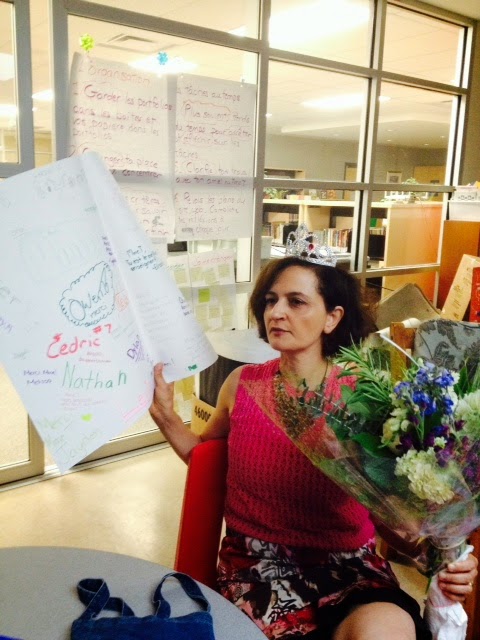Coding is creativity, collaboration, critical thinking and communication, it is valuable with interpersonal skills. I introduced coding on the first week of December to my students. I provoked the students' thinking by having each team link to an animation and play while seeing the inside. Students immediately figured out the how of coding. We began co-constructing a criteria and identifying the variety of coding for the script. On the classroom site I shared many coding articles informing parents about the importance of computing language. Once students knew about http://code.org/learn that same evening students were completing the Hour of Code certificate and exploring game designing and sharing them online on the classroom Padlet for coding.
In class immediate collaboration began, guiding each other through the how of coding and sharing new discoveries. Once the coding skills were established, it took students two days to become familiar with the computing language. Students began a project showing their learning about Social Studies curriculum describing the causes and effects of interactions between European and First Nation for Grade 5 and for Grade 6 Canadian identity by various groups historical and contemporary communities.
Why was coding very successful?
- Peer programming, thinking together
- Perseverance, resilience and persistence
- Self- Confidence
- Problem solving
- Sharing thinking
- Application of new knowledge
- Peer collaborating to improve results
- Explaining their reasoning
- Analyzing
- Application of feedback
- Reflecting and improving their learning process
- Identifying and assessing ideas for creative application
- Deep discussions and decisions ensuring team strengths
- Collective responsibility for individual expertise
- Expression of point of view allowing teams to move forward
- Encouraging each others' innovation
Essential skills were highlighted and practiced. Students were getting further ahead by restarting and rediscovering learning by overcoming any setbacks. They were problem solving and caring for each other.
I was activating and giving students the chance to build their self-confidence at learning and I was observing and asking students as they code about the how and what if of coding language. The engagement blossomed and shined and students became tech leaders at improving their thinking, It was a mindset of learners and creators by unpacking a canvas of many skills.
Through Our Learning Connections Fair my colleagues Patricia Fiorino who teaches Kindergarten and Natalie MacDonald who teaches Grade one also spoke about Kodable, Daisy Dinosaur and Scratch Junior. I am sharing the Scratch presentation that has links to the padlets for both classes and also students' reflections and explaining the coding. A group of students also created a site and an Incorporation for others to try their games and leave feedback. During the Hour Of Code week my students guided the Grade ones through an online coding Scratch animations.
Gr 1 @NatalieMacDona5 Gr 5 Ss @StGabeSchool #hourofcode guiding gr1 on @scratchteam #ocsb https://t.co/bDKWQYA0MK
— Rola Tibshirani (@rolat) December 11, 2014
Please share your learning from your students when they start coding and unpacking skills. How successful will your students be at coding?






































